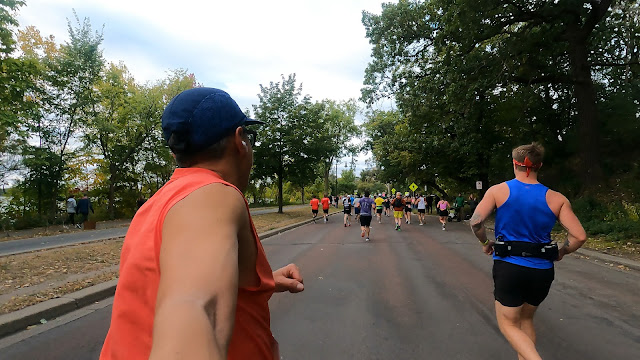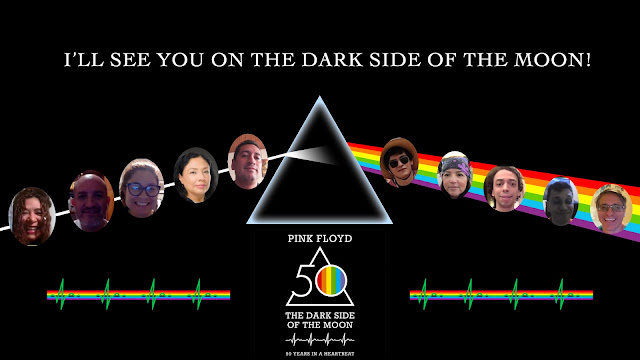The Twin Cities Marathon: Training with a Professional Coach, Achieving a Good Time—but Still Not Under 4 Hours
At 54, I’ve become a quick crier. A heartfelt podcast story or an act of kindness can tighten my throat and fill my eyes with tears. It happens often, and I usually try to hide it. But deep down, I welcome it. These moments remind me that I’m alive, that I care deeply about the emotions and struggles of others. When I’m alone, I sometimes let the emotions take over completely, crying until exhaustion. It’s a guilty pleasure, but a profoundly human one.
Some of my most recent and cherished cries happened while preparing for the Twin Cities Marathon. This time, I had trained with a professional coach, pushing my body harder and smarter than ever before. Three weeks before the race, I entered the tapering phase—a period of reduced training that allows the body to recover and be at its peak for race day. With the physical workload decreasing, my focus shifted to mental preparation. I meditated often, visualizing every detail of the marathon: the streets, the starting line, the course. I watched past race videos and mentally ran the 26.2 miles, rehearsing my race plan—when to eat, when to hydrate, and, most importantly, how it would feel to cross the finish line in under four hours, my ambitious ‘A’ goal.
For my meditation sessions, I used a guided recording originally designed for the Miami Marathon. I edited it to fit the Twin Cities race, personalizing every reference. One of the most powerful elements of the meditation was the mantra: I run for those who can’t. This phrase had first resonated with me in 2022 when I ran the Marine Corps Marathon in memory of my father, who had passed away two years earlier. He wasn’t a runner, but dedicating my miles to him gave the mantra deep meaning.
The following year, I used the same meditation again, and each time I heard the mantra, I felt a lump in my throat and an uncontrollable urge to cry. For the Twin Cities Marathon, I decided to expand the mantra’s meaning—not just running for my father but for everyone who, due to medical reasons, couldn’t participate. I thought of Glen, a friend who had recovered from cancer with astonishing resilience. I also kept in mind the many runners who had to postpone their races due to injuries or health issues. Glen’s own story became part of the marathon’s spirit; with minimal training—barely four miles under his belt—he spontaneously ran 16 miles before finally calling an Uber back to the hotel, embodying the unpredictable magic of race day.
Despite my mental rehearsals and determination to finish under four hours, the race clock told a different story: 4 hours and 6 minutes. Slightly beyond my goal, yet still a strong performance. As I crossed the finish line, emotions flooded in. This time, I didn’t suppress them. I let the joy, the disappointment, the exhaustion, and the triumph wash over me. The end of a marathon is always a unique and unforgettable moment—a collision of achievement and struggle that leaves a lasting imprint on the soul.
Wanting to preserve this experience, I created a video documenting the journey. I didn’t just focus on the race itself but also on the broader aspects of marathon training beyond running. I was surprised by the fitness video market’s vastness—so many people documenting their gym routines with professional-level production. With my daughter’s help, we recreated training clips incorporating these techniques. The second part of the video was all about the Twin Cities Marathon, though I intentionally kept my on-course recording minimal, saving energy for the race itself. Still, I hadn’t accounted for the energy spent singing—yes, singing—while running. I belted out Blue Monday by New Order, the best-selling 12-inch single of all time, and DOUBT by Jeff Rosenstock, one of my most-played songs of 2023.
DOUBT is from Rosenstock’s album HELLMODE, one of my top two albums of the year. I also used another track from the album, LIKE U BETTER, for the first part of my video, where I showcased cross-training activities like yoga, swimming, and plyometrics. My other favorite album of 2023 was I/O by Peter Gabriel. As a longtime fan, I had listened to his entire discography to prepare for a Classic Album Saturday (CAS) session. Though I initially wanted to present I/O, I realized that Melt (his 1980 album) would resonate better with the audience. While I/O is polished and melodic, Melt is raw and experimental, making it my favorite Peter Gabriel record.
The Twin Cities Marathon was a special one—perhaps the best physical and mental preparation I’ve had in nearly a decade. Though I missed my sub-4-hour goal, it was still my third-fastest marathon and my closest attempt yet. With each race, I get a little closer, and I remain hopeful that next time, I’ll finally break into the coveted 3:50s.






Comentarios
Publicar un comentario